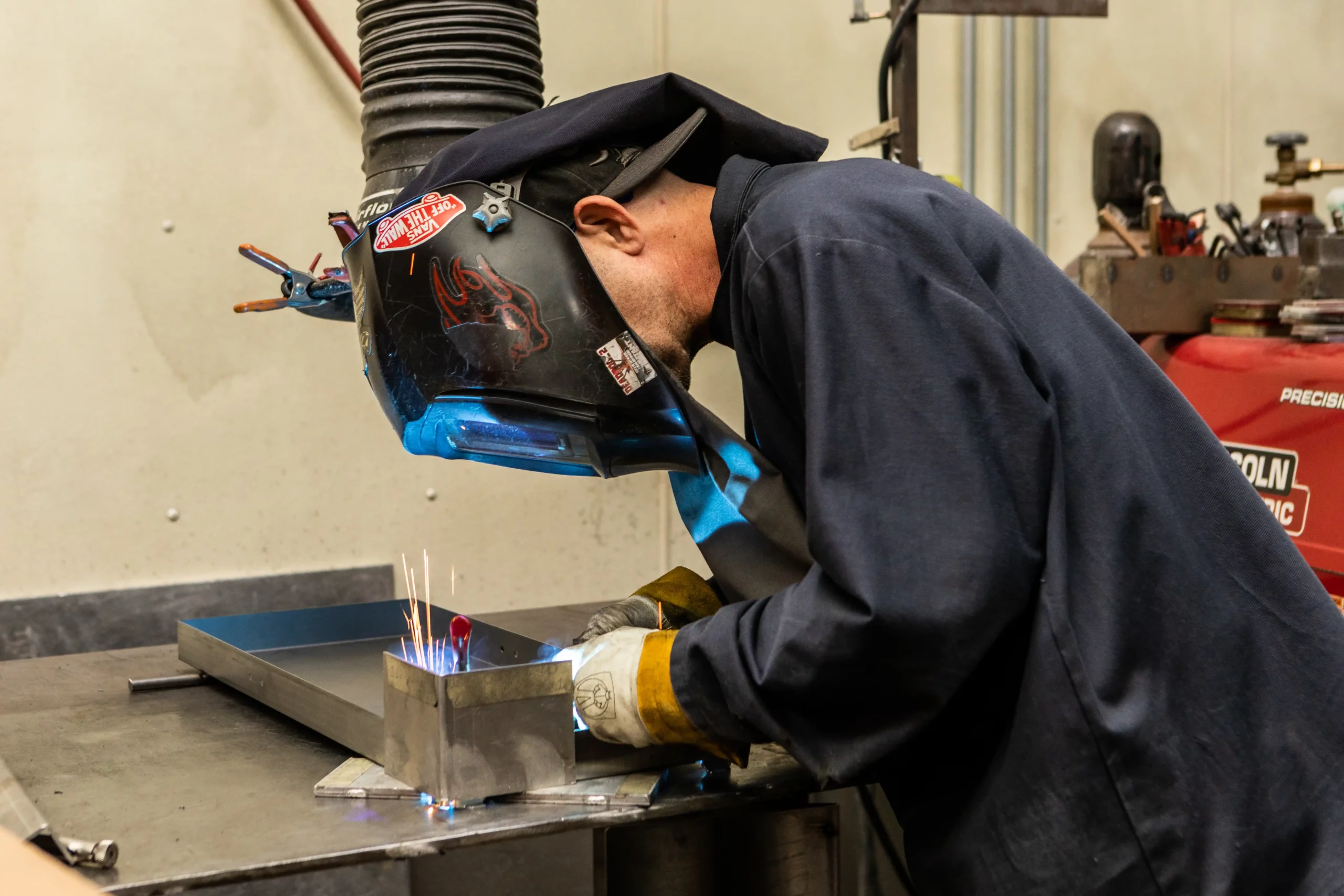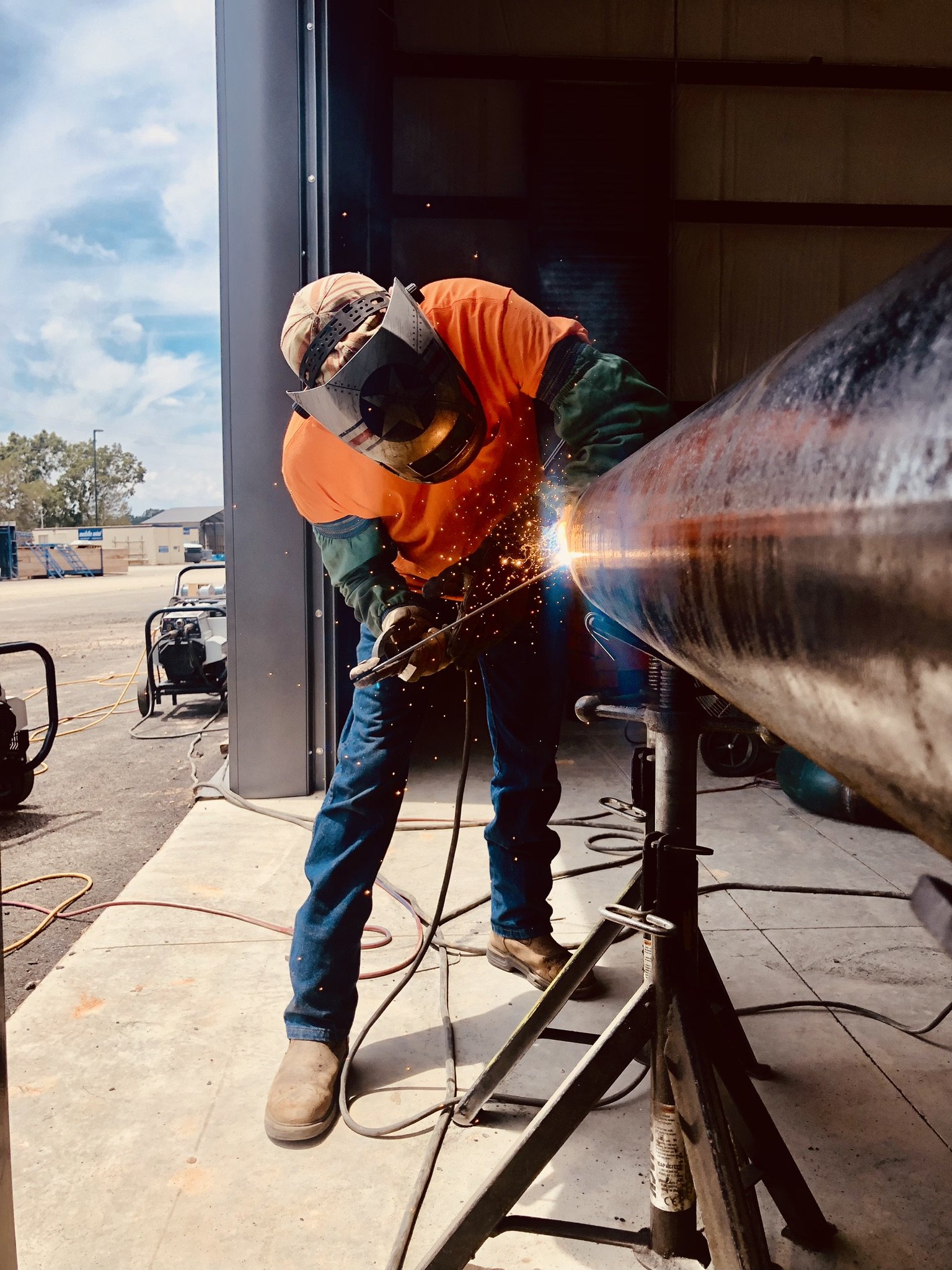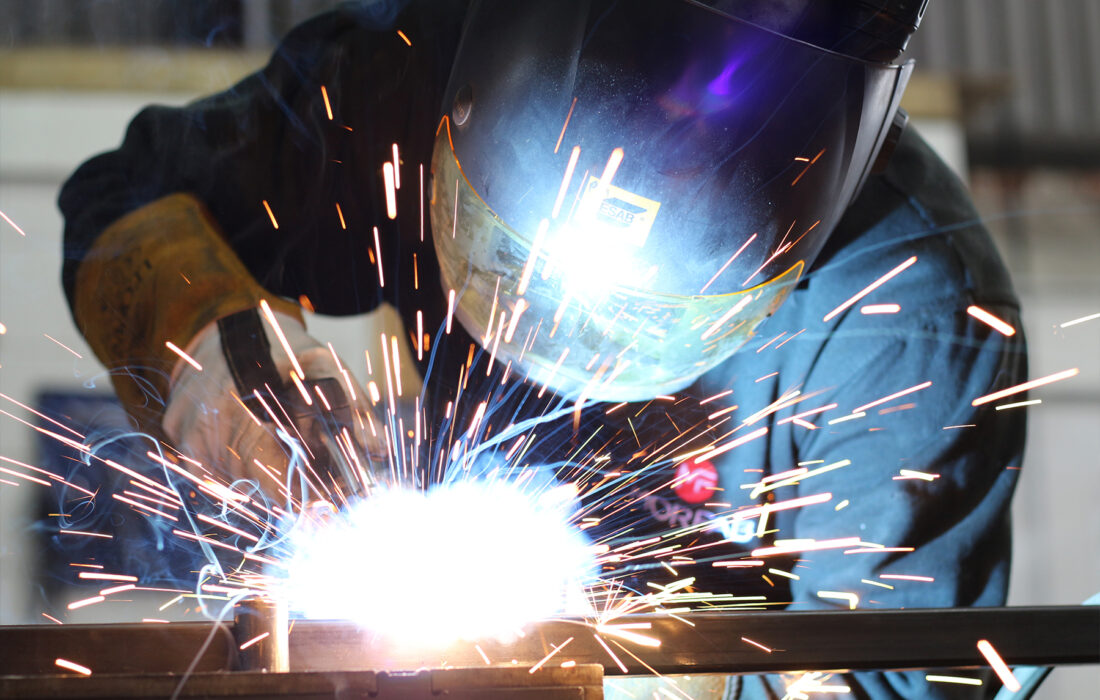Usual Welding Repair Work Issues and Exactly How to Address Them Efficiently
Welding repairs typically run into a series of problems that can threaten the integrity of the last product. Common problems consist of inadequate penetration, porosity, and imbalance, to name a few. Each issue presents special difficulties that require details approaches for resolution. Recognizing these problems is crucial for welders intending to improve their results and abilities. This conversation will certainly check out these common welding fixing issues and efficient approaches to resolve them.
Poor Penetration
Insufficient infiltration occurs when the weld metal stops working to totally fuse with the base product, causing weak joints and possible structural failures. This problem often originates from insufficient warmth input, inaccurate electrode angle, or incorrect welding speed. Welders might run into poor infiltration as a result of a mistake of the required specifications for a particular material thickness or kind. Additionally, contamination on the base product's surface area can prevent effective bonding, aggravating the trouble. To resolve inadequate infiltration, welders must ensure appropriate setups on their tools and keep a clean job surface area. Regular examination of welds is advised to identify any kind of deficiencies early, permitting timely improvements and the avoidance of compromised architectural integrity in bonded settings up.
Porosity
Porosity is a common defect in bonded joints that manifests as small gas bubbles trapped within the weld steel. This flaw can compromise the stability of the weld, resulting in lowered strength and possible failing under stress. Belgrade Welding. Porosity generally arises from contamination, dampness, or incorrect welding techniques, which enable gases to leave into the molten weld swimming pool. To deal with porosity, welders need to guarantee proper surface area preparation, keep a tidy workplace, and utilize appropriate welding parameters. Furthermore, choosing the appropriate filler product and securing gas can minimize gas entrapment. Regular assessment and screening of welds can aid determine porosity early, guaranteeing timely rehabilitative activities are taken, thus preserving the high quality and integrity of the bonded framework
Imbalance
Imbalance in welding can develop from numerous factors, including inappropriate configuration and thermal growth. Recognizing the root triggers is necessary for efficient resolution. Several correction techniques are offered to straighten components and assure structural stability.
Reasons for Misalignment
Welding misalignment frequently stems from a selection of underlying issues that can endanger architectural stability. One key cause is inappropriate fit-up of elements prior to welding, which can result in spaces and uneven surface areas. Variants in thermal development during the welding procedure can likewise cause distortion, particularly if the products being signed up with have various coefficients of development. In addition, insufficient clamping and fixturing might fall short to hold components firmly in area, resulting in motion throughout welding. Improperly kept equipment, including welding makers and tools, may present incongruities in the weld grain, further contributing to imbalance. Operator mistake, stemming from inadequate training or experience, can also play a significant duty in producing misaligned welds.

Modification Strategies Offered
Attending to misalignment properly needs a combination of corrective methods customized to the specific problems at hand. One typical technique is the use of components or jigs to hold parts in the appropriate placement throughout welding, guaranteeing constant alignment. Additionally, preheating the products can help reduce distortion and enhance fit-up. For substantial imbalance, mechanical realignment methods, such as utilizing hydraulic jacks or clamps, can be utilized to remedy the position before welding. Post-weld heat treatment may additionally be needed to ease tensions triggered by imbalance. Mindful inspection and adjustment during the setup phase can protect against misalignment issues from ending up being significant troubles, advertising a smoother welding procedure and boosting total architectural integrity.
Distortion
Distortion is a typical obstacle in welding that can occur from different variables, including unequal heating & cooling. Comprehending the root causes of distortion is important for applying efficient avoidance methods. Resolving this problem not only boosts structural stability yet additionally enhances the total top quality of the weld.
Root causes of Distortion
When based on the intense warmth of welding, products typically undertake changes that can result in distortion. This sensation primarily occurs from thermal expansion and tightening during the welding procedure. As the weld area warms up, the product increases; upon cooling, it gets, which can produce internal stress and anxieties. Additionally, irregular home heating across a work surface can intensify these tensions, leading to warping or flexing. The kind of material likewise plays a significant duty; metals with differing thermal conductivity and coefficients of growth may respond in a different way, resulting in unforeseeable distortions. In addition, bad joint layout and inadequate fixturing can add to misalignment throughout welding, raising the probability of distortion. Understanding these reasons is vital for efficient welding repair service and prevention methods.
Prevention Techniques
Effective prevention techniques for distortion throughout welding focus on managing warmth input and making certain proper joint design. Maintaining a regular warm input assists to lessen thermal growth and contraction, which can bring about distortion. Utilizing techniques such as pre-heating the workpiece can additionally decrease the temperature level slope, advertising uniform heating. Furthermore, picking suitable joint layouts, such as T-joints or lap joints, can enhance stability and minimize anxiety concentrations. Carrying out correct fixturing to secure the work surfaces in position better help in maintaining placement throughout the welding process. Lastly, staggered welding series can disperse warmth a lot more uniformly, preventing local distortion. By applying these strategies, welders can substantially decrease the possibility of distortion and improve the general top quality of their welds.
Cracking
Splitting is a common problem come across in welding fixings, frequently arising from numerous aspects such as incorrect air conditioning rates, material option, or insufficient joint preparation. The incident of splits can considerably endanger the integrity of the weld, leading to possible failures during operation. To resolve this problem, welders should initially analyze the origin, making certain that materials work and suitably picked for the certain application. In addition, controlling the air conditioning rate during the welding procedure is crucial; fast cooling can induce anxiety and result in breaking. Appropriate joint design and prep work additionally add to decreasing the danger. Carrying out these approaches can improve weld quality and durability, ultimately minimizing the possibility of cracking in finished weldments.

Insufficient Blend
A significant problem in welding repair services is incomplete blend, which takes place when the weld metal does not appropriately bond with the base product or previous weld passes - Belgrade Fabrication. This defect can bring about weaknesses in the joint, potentially endangering the integrity of the bonded framework. Variables adding to insufficient fusion consist of insufficient warmth input, improper find out this here welding method, and contamination of the surfaces being joined. To address this problem effectively, welders ought to assure proper pre-weld cleansing and surface area preparation, along with readjust their welding criteria to attain appropriate infiltration and combination. Regular evaluation throughout the welding process can likewise aid identify insufficient fusion early, permitting prompt rehabilitative procedures to boost the total high quality of the weld
Overheating
While welding repairs can enhance structural honesty, overheating offers a considerable difficulty that can cause product deterioration. Excessive warm during welding can change the mechanical properties of metals, causing lowered strength, raised brittleness, and bending. This sensation is particularly vital in high-stress applications where structural reliability is critical. Identifying getting too hot can include visual assessments for staining or distortion, as well as checking temperature throughout the welding process. To alleviate the dangers linked with getting too hot, welders ought to utilize appropriate techniques, such as controlling warm input, adjusting traveling speed, and utilizing appropriate filler materials. In addition, implementing pre- and post-weld warm treatments can aid bring back product buildings and enhance the total quality of the repair work, ensuring lasting efficiency and safety.
Often Asked Concerns
What Are the Common Signs of a Welding Issue?

Exactly How Can I Evaluate My Welds for High quality?
To check welds for high quality, one can make use of visual assessments, ultrasonic screening, and radiographic methods. Each technique assures architectural honesty, identifies defects, and confirms adherence to specified criteria, ultimately improving the dependability of the welded joints.
What Security Preventative Measures Should I Take While Welding?
When welding, one should focus on safety by wearing suitable personal protective tools, making certain proper ventilation, securing flammable products away, preserving a tidy work area, and recognizing surroundings to stop crashes and injuries.
Can I Fix a Weld Without Redesigning the Entire Joint?
Repairing a weld without redesigning the whole joint is feasible, relying on the damage (Montana Mobile Welding and Repair Welding). Methods such as grinding, including filler material, or using a welding procedure can efficiently resolve certain imperfections while maintaining the bordering framework
What Tools Are Crucial for Effective Welding Repairs?
Necessary tools for reliable welding repair services include a welding maker, cable brush, mill, safety equipment, clamps, and filler materials. Each device plays a crucial function in making certain quality and security throughout the repair procedure. Porosity usually occurs from contamination, wetness, or improper welding techniques, which enable gases to escape right into the liquified weld pool. Inadequately conserved tools, consisting of welding makers and tools, may introduce inconsistencies in the weld bead, further contributing to misalignment. When subjected to the extreme warmth of welding, products usually undergo modifications that can lead to distortion. Fracturing is a typical concern experienced in welding fixings, typically resulting from different aspects such as inappropriate cooling welding turntable rates, material option, or insufficient joint preparation. A substantial problem in welding repairs is incomplete combination, which happens when the weld steel does not effectively bond with the base material or previous weld passes.